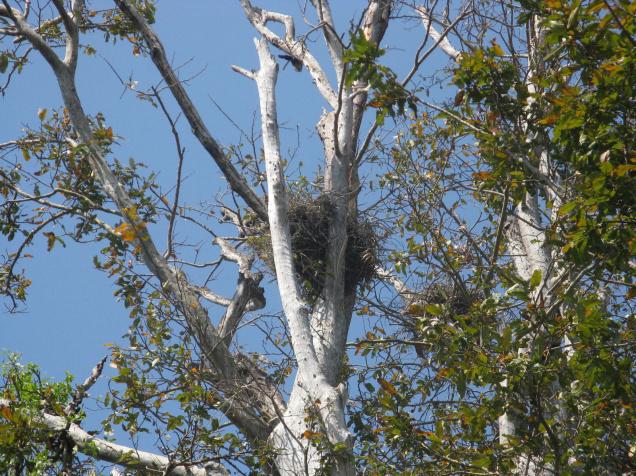A picture of a vulture’s nest at Siriyur in the Nilgiris North forest division. Photo: Special Arrangement
Study in the wild to create awareness of conservation
The last significant vulture population in the Western and Eastern Ghats are threatened by the indiscriminate use of pesticides, say researchers watching vulture habitats.
A team of researchers from CareEarth Arulagam has taken up a detailed study in the wild and creating awareness of conservation of these forest scavengers. The organisation has its field station located within the vulture habitat at Bhavanisagar in Erode district.
Patrick David, Project Co-ordinator, CareEarth Arulagam, said he, along with his team members, were studying the landscape for nearly three years.
The vulture project was taken up in December last year.
A 180-sqkm area is being monitored under this programme. Semmanatham, Avaralla and Siriyur in the Nilgiris North Forest Division are some of the places where vulture nests were sighted by the team. Apart from this, the scavengers were sighted all along the Moyar valley, Mr. Patrick said.
Talking about the study, he said it had two components: ecology and conservation. In the ecology part, the team is identifying nesting sites of vultures and studying their site characteristics.
Under the conservation component, the team is educating Forest Department staff and villagers in the vicinity of the vulture habitat about different species of vultures, as most of them are unaware of the number of vulture species in existence or about how to identify them. And few were aware that vultures are found only in these parts in Tamil Nadu.
Mr. Patrick said: “We are also working with veterinary doctors, pharmacists, and Animal Husbandry Department officials to phase out the banned drug, diclofenac. We have also requested the Forest Department to ensure that dead animals are not buried as it will deny food for these scavengers.”
Diclofenac is the main reason for the decline in vulture population. It is an anti-inflammatory veterinary drug and if the vultures eat the carcass of any animal which the drug had been administered to, it would affect the kidney of vultures, leading to their death. Another threat is a pesticide used by farmers, he said.
Mr. Patrick said if these threats were addressed, the present population of vultures in the Western and Eastern Ghats could be sustained. A good habitat — open areas with sparse trees to locate dead animals and substantial wild herbivore population — is essential for their survival, he said.
Four species of vultures are found in Tamil Nadu — white-backed vulture, long-billed vulture, Egyptian vulture and red-headed vulture.
Apart from that, the research team is also working with the youth of this region to develop vulture brigades. The youth would be custodians of the bird in the region. They will report vulture sightings and nest sites and also help in preventing carcass poisoning, Mr. Patrick said
source: http://www.TheHindu.com / Home> News> States> TamilNadu / by P. Oppili / Chennai, April 27thy, 2012
